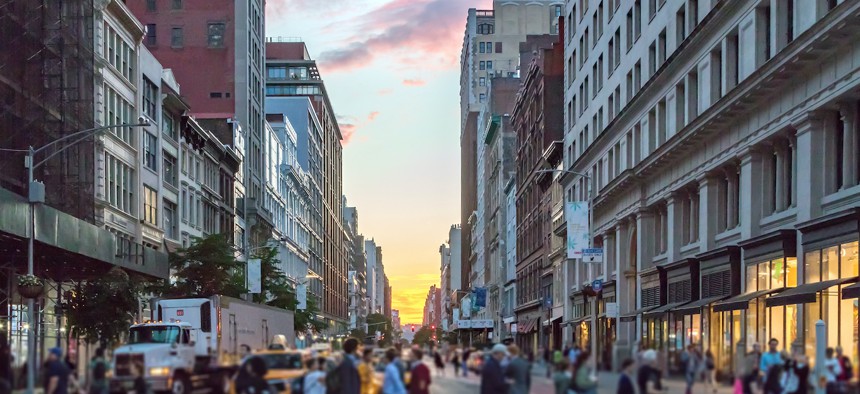Since announcing his mayoral campaign in January, Andrew Yang has proposed several worthwhile ideas. He wants New York City to have its first public bank and a geothermal power plant. The cash-transfer program he has offered for the very poorest residents will, at the minimum, offer beneficial extra income.
But Yang, who is new to the city’s political firmament, has swung and missed too. He called for anillegal casino on Governors Island. He has repeatedly recalibrated positions on various local issues,like the busway in Flushing andeducational standards for yeshivas. He is not a friend of progressives who, wisely,want to tax the ultrawealthy who have only grown richer during the pandemic.
On Thursday, Yang misfired again. During a speech in front of the Association for a Better New York, the former presidential candidate and entrepreneurproposed an odd and unworkable idea: giving tax breaks to large companies that refuse to allow remote work. Yang’s proposal would run counter to where the market is headed, anger white-collar workers and deny the municipal government much-needed revenue.
“The first thing we have to do is support companies bringing their workers back,” Yang said. “I think we are going to have to invest some resources.”
Yang began to discuss thelong-repealed commuter tax, which levied a tax on about 800,000 people who worked but did not live in the city, and said that New York needed the reverse of this policy.
“We’re going to have to provide either individual or employer incentives or employer tax breaks or incentives for workers who are commuting into the city five days a week,” Yang said. “Years ago, there was an idea put out that was a commuter's tax, I am suggesting we are going to need essentially the opposite—we are going to need commuter incentives.”
Such a proposal would have to pass the Democrat-controlled state Legislature, where a tax break would hold little appeal. But it’s worth asking on the merits – why should big corporations that require workers to shlep into an office every day pay less in taxes?
Yang must recognize that the future, for the many large companies that populated Midtown and downtown Manhattan, is in remote work. The pandemic has taught them that they can remain efficient and earn great profits keeping their workers at home, closer to their families. Commutes are expensive and time-wasting.
More importantly, for these companies, office space in Manhattan is incredibly costly. Why spend millions housing workers in large buildings?
A tax cut won’t halt the inexorable shift toward remote work. There will be some companies, perhaps, that take advantage of it – mostly those that were already planning on requiring in-office work anyway.
Inevitably, even among many of the companies that maintain sprawling Manhattan headquarters, there will be a hybrid model: some workers in the office, some at home and some in the office part-time. This will mean, at the minimum, companies will require less floor space.
Corporate America has spoken. JP Morgan & Chase, Target, Ford, and Salesforcehave all said they would embrace remote work. For them, it is common sense: a cost-saver that their workforce largely favors. This trend is inevitable, global and already underway. It cannot be stopped with local tax incentives.
The problem with a future of remote work is that there will be less demand for office space, leading to lower commercial rents, lower property values and property tax receipts. And fewer white-collar workers in Manhattan means fewer lunches, after-work drinks and dinners, shopping excursions and cab rides to meetings. For local service workers, many of them immigrants, this is a catastrophe, but an ill-advised tax incentive won’t save them.
Instead, the next mayor – be it Yang or anyone else – should dream up a new vision for the core of Manhattan. Here, Yang and several of the candidates have been open to certain innovative ideas, like embracing the return of single-room occupancy dwellings and exploring the conversion, when possible, of office space into residential units. This is easier said than done, with commercial landlords still holding out for well-heeled tenants and office architecture standing in the way of simple conversions.
Still, it must be pursued. The collapse of blue-collar manufacturing in downtown Manhattan was a disaster for the city, but new housing sprung up in vacant lofts and a bohemia blossomed. Housing is one answer to the woes of Midtown. Another is the reimagining of empty space and what attractions can exist that will draw tourists and residents alike. Community centers, art galleries, performance spaces, libraries and museums – spaces that foster socialization – can fill vacancies in the coming years. Yang should abandon the tax-break mindset that too many would-be technocrats view as a city’s salvation. It goes against the future and is doomed to fail.
NEXT STORY: Editor’s note: Yang’s second shot


